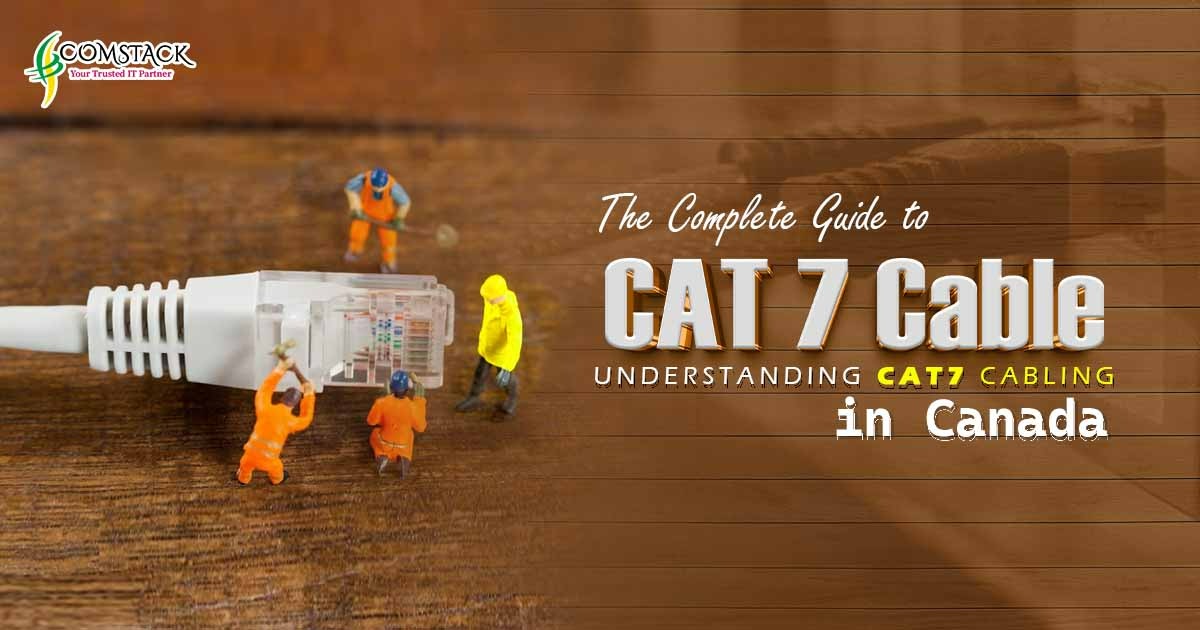CAT 7 cable, short for Category 7 cable, is a high-performance Ethernet cable designed to support high-speed data transfer rates and bandwidth-intensive applications. It provides significant improvements over its predecessors, including enhanced speed, reduced crosstalk, and better overall performance. In Canada, CAT 7 cabling has gained popularity because of its reliability and ability to meet the demanding networking requirements of various industries.
What is CAT 7 Cable?
CAT 7 cable is an Ethernet cable standard explained by the International Organization for Standardization and the Telecommunications Industry Association (TIA). It features twisted pairs of copper wires surrounded by shielding to minimize interference and ensure high data integrity. CAT 7 cables backward correspond to previous Ethernet standards, making them suitable for both new installations and upgrades of existing networks.
Benefits of CAT 7 Cable
- Higher Bandwidth: CAT 7 cables support higher bandwidths compared to earlier standards, making them ideal for handling large volumes of data.
- Faster Speeds: With transmission speeds of up to 10 Gbps (gigabits per second) over 100 meters, CAT 7 cables offer lightning-fast connectivity.
- Enhanced Protection: CAT 7 cables feature upgraded shielding to offer superior defense against electromagnetic interference (EMI) and minimize signal degradation.
- Forward-Looking Investment: Opting for CAT 7 cabling guarantees that your network infrastructure is equipped to accommodate forthcoming technological innovations and escalating bandwidth requirements.
Installing CAT 7 Cable in Canada
When planning to install CAT 7 cabling in Canada, several factors need consideration to ensure optimal performance and compliance with local regulations.
Cable Pathway Planning
Before installation, carefully plan the cable pathways to minimize potential interference and ensure efficient cable management. Consider factors such as distance limitations, environmental conditions, and the presence of other electrical or data transmission cables.
Proper Cable Handling and Termination
Handle CAT 7 cables with care to avoid damaging the delicate internal wiring and shielding. Use appropriate termination techniques and connectors to maintain signal togetherness and reduce the risk of signal loss or interference.
Future Trends: Fiber Optic Cabling
While CAT 7 cable remains a popular choice for wired networking in Canada, the emergence of fiber optic cabling presents new opportunities and challenges for network infrastructure.
Advantages of Fiber Optic Cabling
Greater Bandwidth: Fiber optic cables offer significantly higher bandwidth compared to copper cables, making them suitable for ultra-fast data dissemination.
Longer Distances: Fiber optic cables can transfer data over much longer distances without signal degradation, making them ideal for large-scale networks.
Immunity to Electromagnetic Interference: Unlike copper cables, fiber optic cables are not open to to electromagnetic interference, ensuring reliable performance in high-noise environments.
Integration with CAT 7 Cabling
In many cases, a hybrid approach combining CAT 7 and fiber optic cabling may be the most effective solution. CAT 7 cables can handle local connections within a building or campus, while fiber optic cables provide high-speed connectivity between distant locations or data centers.
Conclusion
CAT 7 cable continues to be a reliable choice for high-performance Ethernet networking in Canada, offering impressive speed, bandwidth, and reliability. By understanding the benefits of CAT 7 cabling, adhering to local regulations, and considering emerging technologies like fiber optics, organizations can build robust and future-proof network infrastructures to meet their evolving connectivity needs. To know more Cat7 cabling click here: https://en.wikipedia.org/wiki/Cat7
CAT7 cable is used for high-speed Ethernet networking applications, providing enhanced performance and reliability. It supports quicker data transfer rates, creating it ideal for bandwidth-intensive tasks like that streaming high-definition multimedia, online gaming, large file transfers, and data center connectivity where speed and reliability are crucial.
CAT7 offers several improvements over CAT6, including higher bandwidth, faster data transfer speeds (up to 10 Gbps over 100 meters), and better resistance to interference. While CAT6 is sufficient for most applications, CAT7 is preferred for demanding environments where maximum performance and reliability are essential, albeit at a higher cost.


